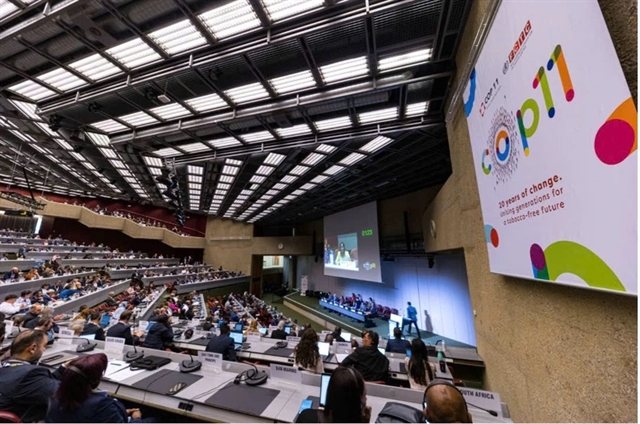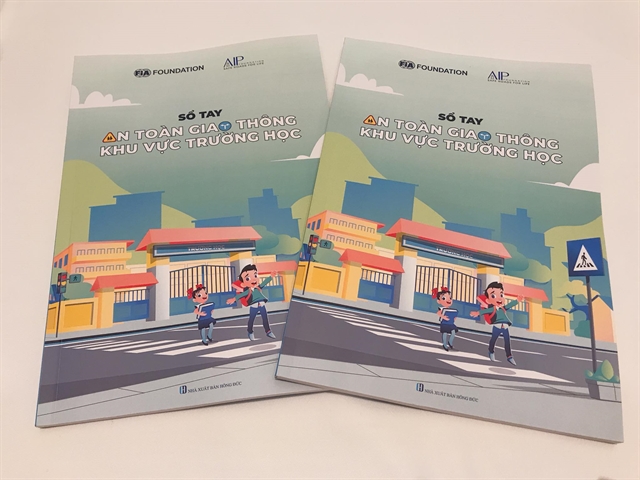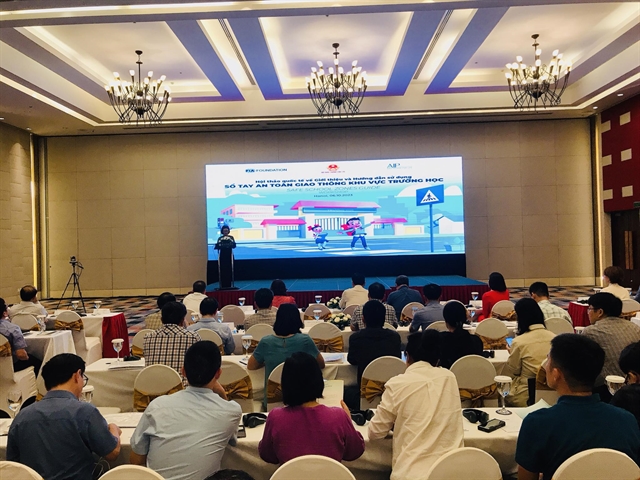 Society
Society


|
| The handbook on traffic safety in school zones. — VNS Photo Thu Trang |
HÀ NỘI — A handbook focused on traffic safety within school zones has been was launched following two years of research and its application in various pilot schemes across different regions.
The research for the handbook was initiated based on the Prime Minister's directive in Decision No 2060/QĐ-TTg dated December 12, 2020. This decision endorsed the national strategy to bolster road traffic safety from 2021-30, with a vision extending to 2045.
Central to the strategy is the ambition that by 2030, all school entrances situated on national highways, provincial roads, and primary urban routes will experience stable traffic, ensuring safety and avoiding congestion.
In 2021, the AIP Foundation, in collaboration with the Ministry of Transport (MoT) and the University of Transport and Communications, crafted the handbook aiming to safeguard Vietnamese students during their commutes to school.
Two months prior, the MoT dispatched the handbooks to regions throughout the country, serving as a guideline for the initiation of projects, works, and strategies to bolster road traffic safety within school zones.
Nguyễn Công Bằng, the Deputy Director of the Department of Transport under the MoT, remarked during the handbook's unveiling on Friday that children, particularly those commuting solo to school, are considered a high-priority vulnerable group in many sectors, especially transportation.
Data from the National Traffic Safety Committee indicates that between 2016-20, traffic accidents involving individuals under 18 years of age represented 6.75 per cent of all accidents across the country. This figure increased to 10.63 per cent in 2021.
To mitigate the risks faced by children and students during their school journeys, Bằng emphasised the necessity of prioritising safety in school zones during the construction or improvement of infrastructure and traffic facilities.
“Following the motto ‘Children today, the world tomorrow’, children are the happiness of each family, and the future owners of the country, thus protection of children is not only the responsibility of each individual, each family, and each school, but also of society,” said Bằng.

|
| An overview of the handbook launching ceremony. — VNS Photo Thu Trang |
Nguyễn Xuân Tùng, a specialist from the Faculty of Civil Engineering at the University of Transport and Communications and a contributor to the handbook, stated that its primary objective is to tackle road traffic safety concerns, ranging from the planning and infrastructure development phases to the design and assessment of traffic safety in school zones.
Significantly, the handbook delineates the concept of a "safe school zone". This serves as a foundational reference for planners, designers, builders, and policymakers to implement strategies that reduce risks for students commuting to schools in Việt Nam.
Tùng said: “We urge professionals, including designers, engineers, and experts in road infrastructure and traffic, to utilise the handbook as a guide when executing projects associated with school zones.”
During the launch, attendees were privy to insights gleaned from various provinces and cities that have trialled enhancements in traffic infrastructure around schools.
There was also an exploration of potential solutions to enhance traffic safety in school zones across the nation.
Presently in Việt Nam, over 17 million children commute between their homes and schools two to four times daily, as per MoT statistics.
A considerable number of these students walk to school on roads lacking pavements, many of which feature mixed traffic lanes.
The more alarming problem is that vehicles’ speeds around schools frequently exceed internationally recommended speed limits for school zones, said the MoT. — VNS




